I have only just noticed that the subject for the Sir William Lyons Award (a competition for aspiring young motoring writers) is ‘premium cars’. Now usually I would run a mile before discussing the topic of a Premium Car because it’s one of those phrases that turns my stomach (I’m not saying this just because I’m not eligible for the Award in all sorts of ways…what’s that smell? Could it be rotting grapes?) but after considering the matter for a bit, I’ve had the following thoughts about the past of premium cars.
What makes a premium car? Let’s start with a basic definition of premium- I will make the rash assumption that if you’re reading this blog you already know what a car is, unless you came here looking for some way of making your goldfish levitate. In which case I suggest you close your browser tab now. The Online Dictionary has 13 definitions of ‘premium’ of which the two relevant to this topic are:
“a sum above the nominal or par value of a thing.”
And:
“of exceptional quality or greater value than others of its kind; superior”
You will immediately notice that there is a difference between these two definitions. The first is objective (a quantifiable sum of money) while the other is subjective (it depends what sort of value is being referred to).
I reckon that if you were to ask the general public what a ‘premium car’ was, they would plump for something approaching the second definition; it is a car that is better than the others. But all the manufacturers care about is the first definition- the amount of extra money they can charge for the product. This immediately raises an interesting point because, while these are two different ways of looking at the issue, they are related. The car maker will only be able to charge their premium if the buyer reckons they are getting what they think is premium. The business that interests me is that what car buyers value in a car has clearly changed over time.
BP- Before Premium
In the early days cars were luxury products- they were all, in a sense, ‘premium’ because they were better than the usual way of getting around, which had four legs and ran on hay. With the rise of mass motoring in the ‘Twenties and ‘Thirties the market became very polarised- the rich had their Rolls-Royces, Humbers and Wolseleys while those that could afford a car made do with an Austin Seven, a Morris Minor or a Ford Model Y. There was very little middle ground and the few cars in the middle were generally just slightly scaled-up versions of the small cars. Throughout the market there was very little notion of ‘speccing’ a car. Obviously a Royce would be pretty much custom-built at great expense but mechanically it would be the same as every other one. An Austin Seven came with pretty much nothing in the way of equipment that wasn’t the minimum required to make the car work and the lucky first-time motorist was left with little more than the choice between a saloon and a tourer.
In this period it’s easy to discern the ‘premium cars’ and why they were considered such- a Hillman was better in almost every way- size, trim, equipment, power, performance, brakes, even the thickness of the steel, to a baby Austin. There was more to the car, so it cost much more to make.
Where things get interesting is in the ‘Fifties when the car became a consumer item. When ‘having a car’ ceased being a status symbol in itself it became increasingly important to people what sort of car they owned and manufacturers and advertisers were only too happy to oblige.
The Age of Appearance
This was the time of badge engineering when ‘premium’ was, seemingly, hugely superficial. Manufacturers tended to release what would now be considered different trim levels as entirely different models, or even different marques. A Ford Consul was just a lower-powered, less garish Ford Zephyr. A Vauxhall PA Velox was just a base-spec PA Cresta. A Riley One-Point-Five was just a more powerful and better-trimmed Morris Minor with a different nose (and differed from the Wolseley 1500 only in the badging and a couple of dials on the dash). A Hillman Minx with a different paintjob and some more chrome became a Sunbeam Rapier. The point of this, of course, is that the preconceptions from the previous era were still alive and well. Why buy a Morris when you could get the same car but with a Wolseley badge? The cars may have been structurally and mechanically identical but you still got more in way of power or luxuries or trim- the price premium was justified by the premium in perception.
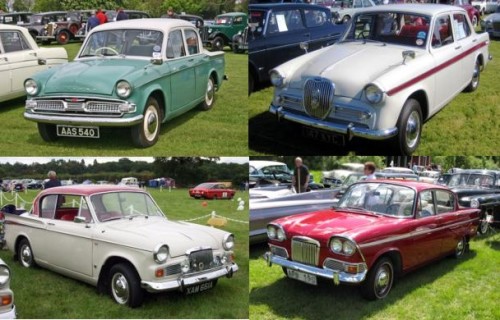 These days BMW offers that sort of variety just in the 3-Series line-up.
These days BMW offers that sort of variety just in the 3-Series line-up.
At the bottom rungs of the motor industry it worked the same way but on much more modest terms. A ‘DeLuxe’ Mini or Imp meant that it came with a heater and, maybe floor carpets rather than mats. A lot of really cheap cars like the Ford Popular, the Citroën 2CV and the Volkswagen Beetle still offered the ‘like it or lump it’ specification.
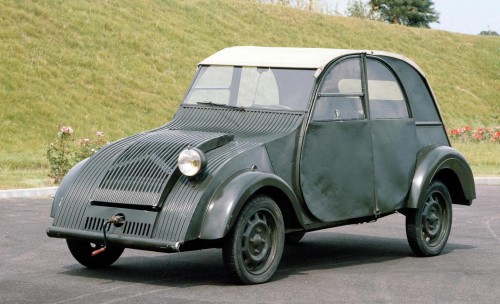 Early plans to offer the ‘High Intensity Bi-incandescent Lighting Pack’ as an optional extra were shelved.
Early plans to offer the ‘High Intensity Bi-incandescent Lighting Pack’ as an optional extra were shelved.
In fact Ford is an interesting digression here. While it may have had its Consul-Zephyr-Zodiac ‘range’, they were all Fords. Ford (in Europe at least) didn’t have a stable of different brands to work with. Instead the company became masters at carefully picking its trim levels and then marketing them with huge dollops of snob appeal. In the ‘Sixties the Ford Cortina range was labyrinthine in its scope, all so Mr. Jones could lord it over Mr. Smith next door because his Cortina Super had a tachometer and a clock which the ‘mere’ Cortina DeLuxe didn’t. This reached its peak with the 1600E, a badge that was worked up to such levels of kudos that it remains the only case I’m aware of where there’s an enthusiasts’ club for one specific trim level of one specific model. The fact remains, though, that a Cortina was still a Cortina and that the ‘premium’ 1600E was only a premium product on a superficial basis. This isn’t to say that buyers didn’t personally value the vinyl roof and velour seats but the car was no better at being a car than most of its contemporaries.
The Age of Engineering
The real shift came in the ‘Seventies. This was when the turmoil in the British motor industry was combined with the rise of the Japanese and German ones. In an austerity-ridden war-devastated nation few people had the money or inclination to feel superior just because their car had a few more letters on its boot badge than anyone else’s and the focus was on making affordable cars that were cheap to run, easy to use and, crucially, reliable. These buyers put their premium on reliability and technical quality rather than trim and badges.
When these countries began exporting cars to fill the gaps that the British had made themselves, it suddenly dawned on the public that cars could be reliable. A Datsun Cherry or a Volkswagen Type 3 had an appalling image and was not considered ‘premium’ (no Cortina 1600E driver would have felt threatened by a competing rep turning up for a photocopier sales pitch in a Corolla 1.6) but they were cheap, they worked and they came with a lot of kit as standard.
However it was the Germans that really hit on the idea of making build quality and reliability into something people would value in and of itself, and pay over the odds for. Unlike Japan, Germany didn’t enjoy the benefits of low-cost labour so the likes of BMW and VW couldn’t compete on price. What they could do was make very ordinary cars that were very reliable and then sell to people on the basis that a basic Golf may have a gutless engine, no radio, no glove box lid, almost non-existent door trims and terrifyingly poor brakes but it would always, always work and would keep on doing so for a long time.
This wasn’t an entirely new idea. Other companies had tried basing their marketing on clever or sophisticated engineering. Citroën had turned the technique into something approaching a literal art form. A classic Citroën is much as an intellectual exercise as it is a driving experience and the cars are the result of engineers being given free rein to design their way around problems. This, as much as their poverty-suitable running costs, are why 2CVs are so stereotypically associated with aesthetic intellectuals and polytechnic lecturers. BMC and British Leyland tried to do the same with their own range of clever and capable front-wheel drive cars with weird fluid-based suspension. Citroën and BMC hoped that their cars’ technical benefits would encourage people to pay the higher prices (the financial premium) that the complex engineering made necessary.
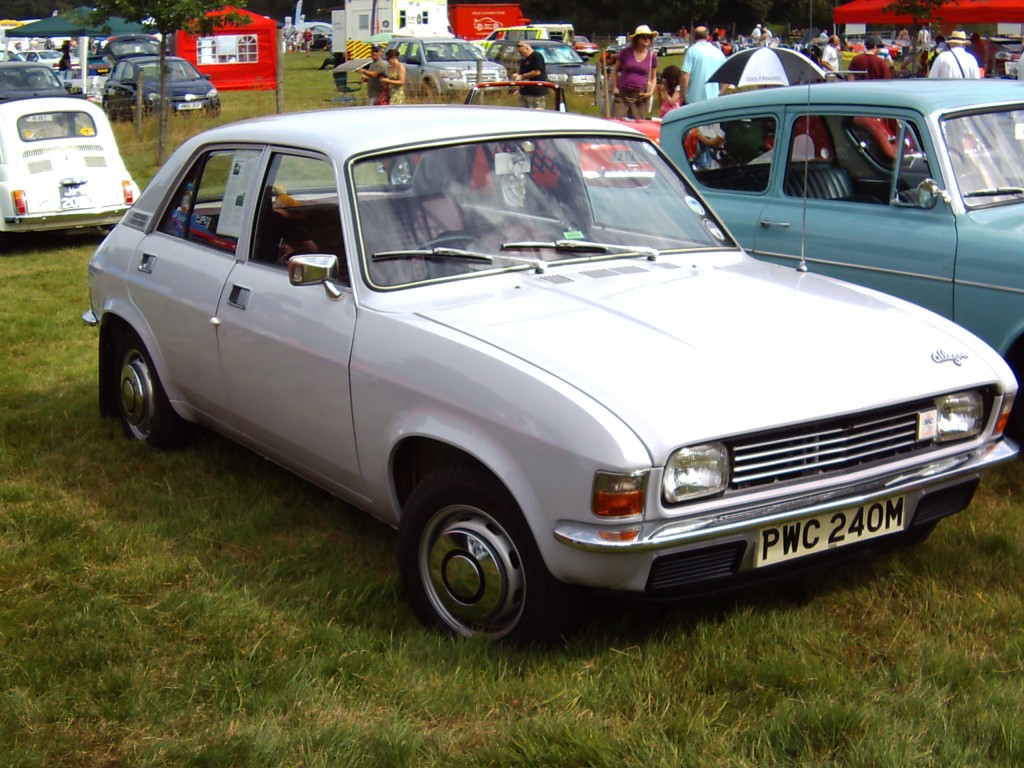 This was British Leyland’s idea of a premium car.
This was British Leyland’s idea of a premium car.
The problem both companies had was that most car buyers didn’t put a ‘premium of perception’ [pushes glasses up nose and strokes chin] on such things. Citroëns may have had theoretically perfect suspension but they felt entirely different to drive from a normal car and they looked weird. A BMC ‘Landcrab’ may have been a much more spacious, better-riding, better-handling, stiffer-structured, more clever car than a Cortina but it was ugly, it was untrustworthy and its image and marketing lacked any of the artificial pizazz that Ford managed to give its products.
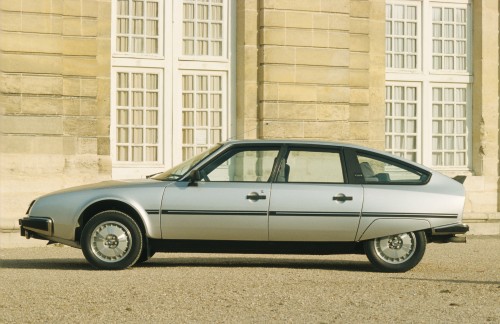 “Yeah, so what if it’s the most advanced car ever made. Does it have a vinyl roof and can I get it with extra driving lamps?”
“Yeah, so what if it’s the most advanced car ever made. Does it have a vinyl roof and can I get it with extra driving lamps?”
Volkswagen was much more straightforward. To appreciate the benefits of a Citroën GS you needed an engineering degree. Anyone and everyone could appreciate that a Golf always started on a winter’s day and that after three years of use it still had no dashboard rattles. Volkswagen’s marketing department turned the Golf’s flaws into selling points. The car’s crushing lack of equipment and cosmetic fripperies was spun as the sign of someone who appreciated a functional design and quality engineering rather than shallow things such as trim levels and performance.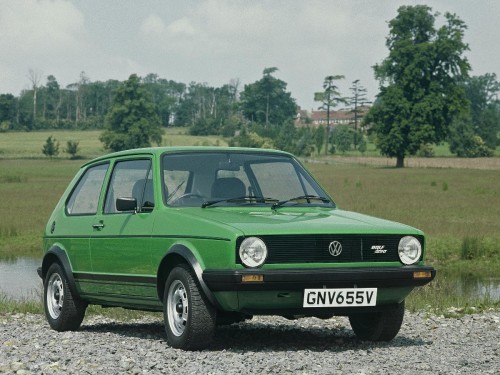
BMW did something similar; an -02-Series or a 3-Series may have been a bit bland to look at and basic inside but underneath they were ‘the ultimate driving machine’. Audi went from being the dead-end cast-offs of NSU that made rebadged Volkswagens to ‘Vorsprung Durch Technik’ almost overnight. Suddenly German brands associated with clattery and slow economy cars became desirable status symbols that buyers actively wanted to pay what seemed like over-the-odds prices for.
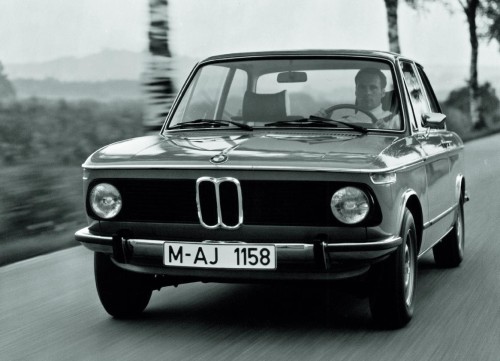 From premium acorns grow huge, twattish oak trees.
From premium acorns grow huge, twattish oak trees.
Naturally, this didn’t mean that the British public suddenly abandoned the notion of consumerism and were happy to drive around in perfectly adequate cars that worked on a purely functional level.
All that had changed was people’s idea of what portrayed the image of being successful, well-to-do and able to afford a premium product- from garish but rust-prone repmobile to stark but reliable German hatchback.
This attitude filtered right through the motor industry (well, almost- it was around this time that BL decided to stop trying to be engineering-led and start being all about superficial marketing. Twenty years too late, guys!) Ford began caring more about aerodynamics and drag coefficients than vinyl roofs while Vauxhall decided to make cars that were actually enjoyable to drive. Instead of trim levels car boots proclaimed the use of turbos, catalyctic converters, fuel injection, ABS, airbags and much else. Volvo made a killing by making cars that wouldn’t kill the upper-middle class families within.
This sort of thing reached its peak with the likes Mercedes-Benz W210 which was an entirely unremarkable car (a compact 2-litre saloon with four doors, a boot and not much in the way of performance) where every single aspect had been designed to be as reliable and as long-lived as possible. The W120 was priced accordingly but people were more than happy to pay extra because the car was demonstrably a better car than pretty much everything else. Just like the Ford Cortina had been in the ‘Sixties, but in a very different way.
That brings us worryingly close to the present day. The next stage in the premium car story is really a return to superficiality, because cars have reached such equilibrium in terms of build quality these days. A £9000 Kia Picanto offers reliability and fundamental build quality that even Mercedes owners would have envied 25 years ago. As I have previously mentioned, it seems that there are no bad cars any more. At the same time increasingly tight and homogenous regulations have restricted what manufacturers can do on the engineering front. It’s hard to imagine a car in 2014 that would be as radical as the Citroën DS or the Mini were in the ‘Fifties.
With quality and engineering no longer being the things that create the sort of image that commanded a premium in the minds of the public, manufacturers have returned to the old ways. The market is now awash with trim levels and specification options that offer very visible differences for very little practical effect, or that actually make the car worse on a practical or driving level (big wheels, low-profile tyres, tinted windows, fake exhausts, fake diffusers and such). Where today differs is that it’s not just about the bolt-on accessories and cosmetics. The modern car market commands a premium for the values of the brand, its heritage and other more esoteric things. People don’t so much buy a car as a complete ‘lifestyle’ package and it that which commands the premium.
In fact things have come full circle and manufacturers have begun making their cars under different brands for different levels of ‘premium’- think Citroën and their DS range, the corporate wedding cake that is Skoda-Seat-Volkswagen-Audi, Nissan and Infiniti, Toyota and Lexus and so on. Even Ford, which for years was notable for not relying on a basket of brands, has joined in and launched ‘Vignale’ as a weird sort-of-sub-brand. The immediate irony here being that Ford used to have its own Italian styling house (Ghia) for its top-level cars, which it ditched in its attempt to push Ford upmarket by itself, and now it’s launched a brand nicked from yet another Italian styling house.
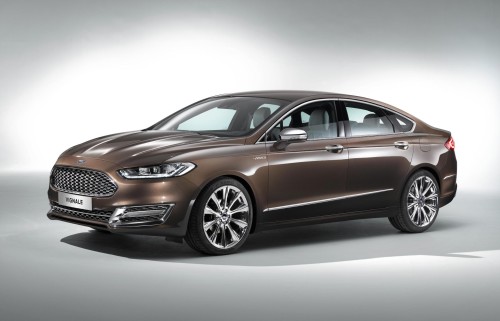 It’s just a normal Ford with some tasteless bling on the front. A Zephyr Zodiac for the 21st-century
It’s just a normal Ford with some tasteless bling on the front. A Zephyr Zodiac for the 21st-century
The other thing that all these modern ‘premium cars’ have in common is that they offer the buyer a huge degree of personalisation (as long as the options are chosen from the manufacturer’s approved list, of course…) which modern design and manufacturing techniques have made possible. These days it’s not a case of getting a Vauxhall Astra CX to beat next-door’s Astra Merit. It’s about getting a Vauxhall ADAM_Glam in Purple Haze with the cloud-print headlining so it’s different from the other ADAM_Glam in Papa Don’t Peach with the cyan speed stripes that’s always next to you in the office car park. Jesus.
That rather depressing note brings this train of thought to a close. Conclusion? It’s all a load of transitory image-driven nonsense and we should all drive Citroën 2CVs.
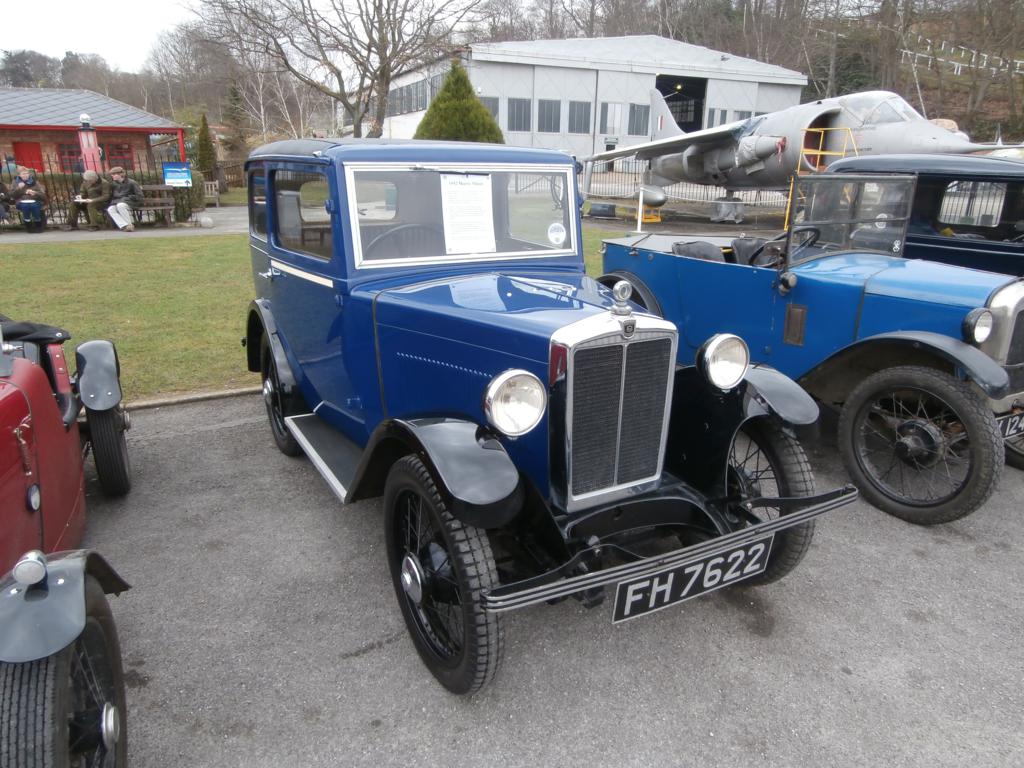
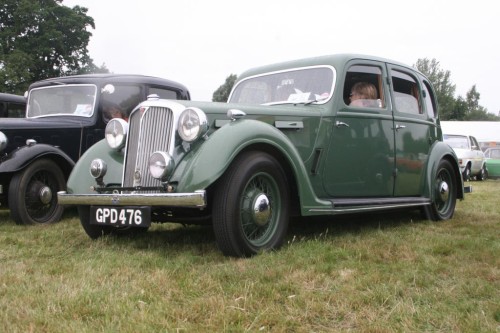
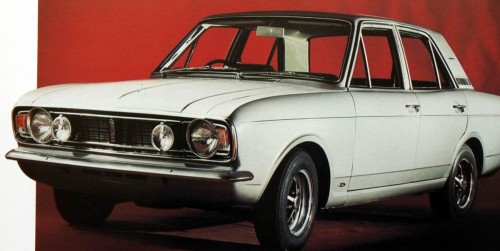
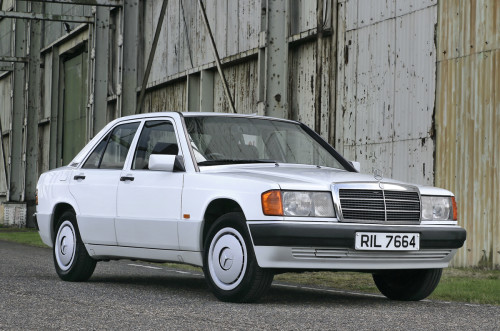
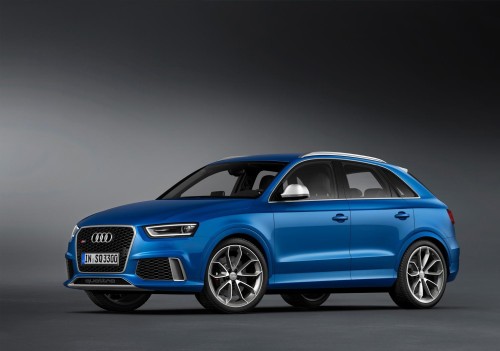
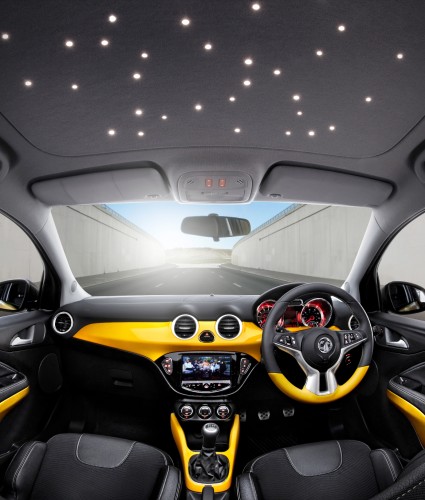
This is a very well thought out article, definitely would be a contender for a premium award.
Interestingly here in Oz the 1600e was called the Cortina GT and similarly the Hillman Hunter GT was renamed the Royal 660. I have a thing for both because of the wooden dashboards and the heaps of Smiths dials. The rostyle wheels have also dated very well.
Fripperies that you never got in a Land Rover or 2CV!
Thanks for the kind words
It’s strange how some manufacturers change their model designations around for different markets. Presumably the ‘E-for-Executive’ didn’t have the same connotations in Australia, where I imagine company cars were less of a thing?
My Land Rover came from the factory with Rostyle wheels- but then it is a luxury one with things like a clock and an interior light.